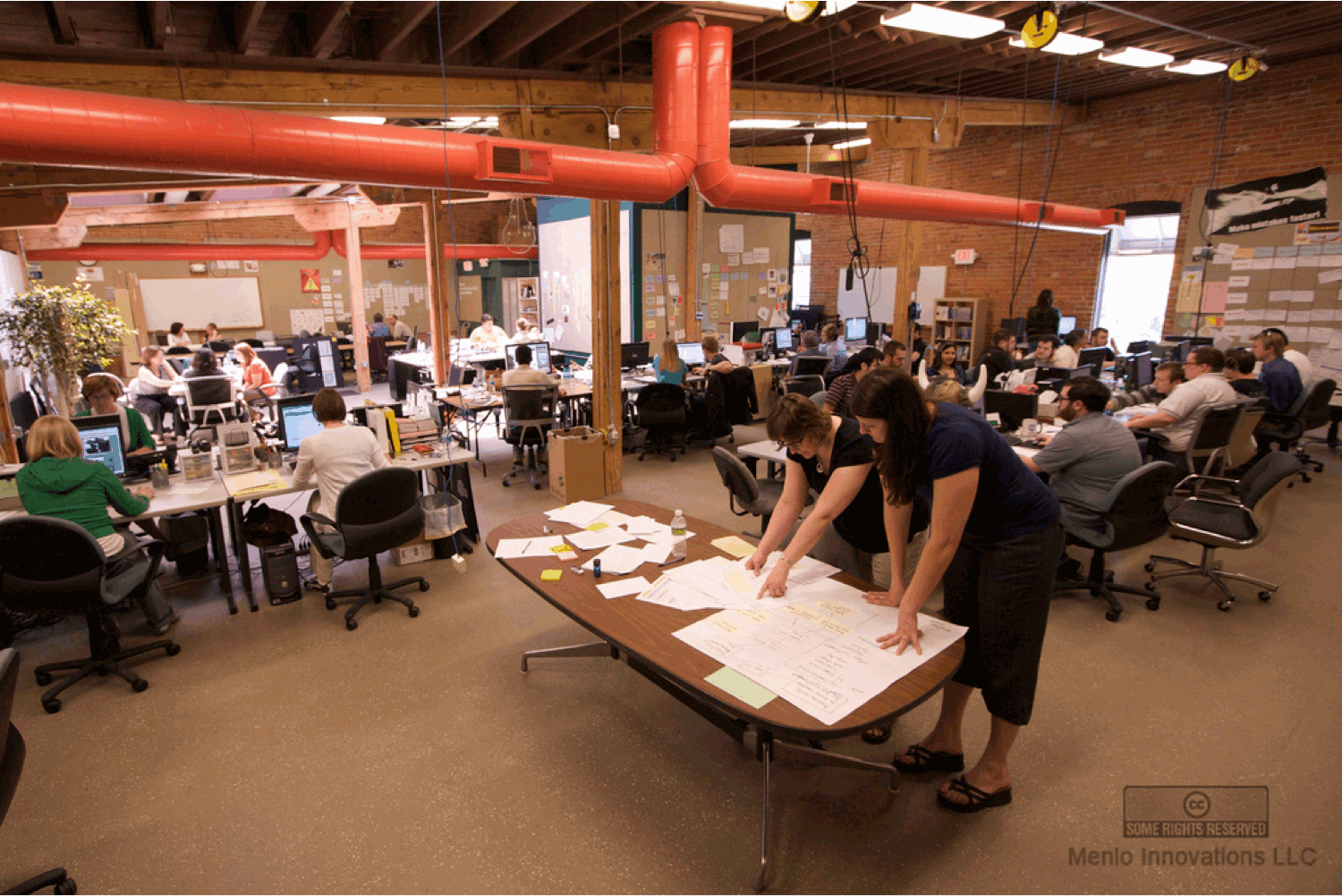Are your management practices simply in need of fine-tuning or do they require thoughtful innovation? Are those processes something you set and forget, or are they worthy of regular examination and renewal? Consider the annual performance review. Does your staff walk out of those feeling that they were dealt with fairly? That they have received great coaching that will enable them to reach new career highs? Do you? I certainly never did. But year after year, we went through the process hoping that the value we desired would be there. We train managers to provide concrete regular feedback on goals, but do they? And, with their staff spending so much time working on teams, are managers even qualified to provide that assessment and feedback? But we persist with these and other largely ineffective processes. What if, instead, we viewed the means by which we manage our organizations as an opportunity for innovation and competitive advantage? Menlo Innovation does exactly that and it produces dramatic results. First, let’s discuss the importance of management innovation, then how Menlo Innovations achieves its breakthrough results, and finally what you can do in your organization.
Management innovation pays. In The Future of Management, the authors describe work that has been done studying management innovation.
Over the past few years, I, along with two of my colleagues at the London Business School, * have been examining the history of management innovation. To date, we have studied more than 100 management breakthroughs, stretching across two centuries. One inescapable conclusion: major advances in management practice often lead to significant shifts in competitive position, and often confer long-lasting advantages on pioneering firms.
The book cites many examples of companies with non-traditional management practices. In some cases the practices are radical, yet they have paid off well. The authors don’t say that you should do what these companies do. Instead consider innovative management practices a potential source of competitive advantage.
Now, returning to Menlo Innovations, how do they continually innovate their management practices? Menlo considers organizational innovation to be a core part of their culture. And they manage the risk of that innovation by conducting small experiments. For Menlo, an experiment is a way to test out an idea to see if it addresses a problem. Instead of working for months on a new process, they look for small ways to test out the idea. Some work, some don’t and some work for a while.
Many experiments don’t survive for very long because they don’t solve the problem. Some are only needed temporarily; others start as temporary and become permanent. We think many are amazing solutions to long-standing problems when, in reality, they last for a little while and then change or go away. Then we run a new experiment.
Here’s an example of how Menlo hires. When hiring, Menlo pairs candidates together to solve a problem, but with an unusual twist.
Many are surprised we don’t use computers or coding examples during our interview process. Our exercises are meant to demonstrate teamwork, not technical skill. The purpose, James tells them, is to make your partner look good. If your partner struggles, help him or her out. If you know something the other person doesn’t know, share it. The goal is to get your partner a second interview.
Teamwork is pivotal to Menlo’s success. The interviewers see teamwork, or the lack of it, demonstrated as the pair works. But this process may change as new ways emerge to select the best candidate. If it appears there is a better way, they’ll try it out, and switch if it works.

Menlo Innovation’s success is not just because of the things they do, but also because of how they work. They consider their management practices malleable, something to reflect on, experiment with and improve. Instead of working to fine-tune existing process, they are willing to depart depart from what they know in the hope of achieving far greater outcomes. So can you do that in your organization?
Create the Climate for Organizational Change
While organizations are generally comfortable introducing change, they seldom touch the pillars of the prevailing management theory: compensation, space layout, job titles, site strategies, promotions, career development and accountability. If there are executives looking for how to boost the organization to the next level of performance, suggest they read The Future of Management and Joy, Inc.: How We Built a Workplace People Love. The first book talks about bold, and sometimes radical, management innovations across multiple organizations, many with recognizable names (for example Whole Foods and W. L. Gore). Joy Inc., shows a smaller scale, experimental approach to change in more detail. If you can get people to discuss these books, culminated by a facilitated workshop to talk about where these ideas might lead your organization, you’ll be in a solid position to move forward.
Make the Benefits of Retrospectives Visible
If your organization is making use of agile to any degree, you already have an experimental approach to organizational improvement – the retrospective. While many managers and executives have a conceptual understanding of retrospectives, many don’t understand the concrete benefits the teams get from these retrospectives. Find meaningful changes that have come about from retrospectives and publicize them. Demonstrate that you are already a culture that experiments with practices. Then, when you suggest experimenting on a broader scale, your suggestion might be better received.
Take Retrospectives to New Areas
Move retrospectives up in the organization and across to new areas. Are you only conducting them for software teams? Consider having them for other kinds of teams or functions. Use retrospectives at the highest possible levels in the organization. Retrospectives are a core organizational process for improvement. People who have experienced their power are more receptive to experimentation and innovation.
Get Support from the Senior Team
In many large corporations, management practices are centrally designed and governed. To bring innovation to those practices, you need to get permission to experiment. This may, in some cases, require approval from the senior team as well as their support. If you are already in the midst of an effective agile transformation, you are in a good position. You have already been innovating your practices and have a level of management support. When you want to try more, possibly colliding with organization policy, like how performance appraisals are conducted in your organization, you’ll need additional support. The critical success factor is small experiments, frequent feedback, and ongoing reflection and refinement. As you get more used to continual improvement and innovation of your management practices, the things you try might become more bold and have more impact.











